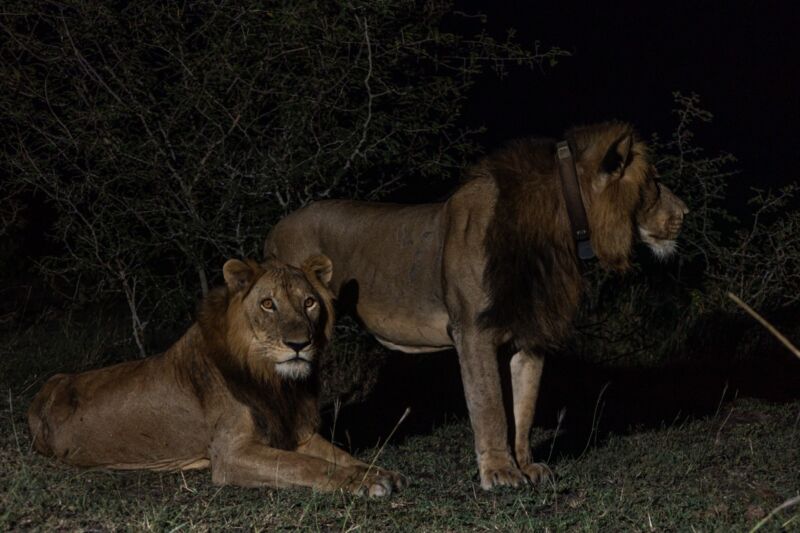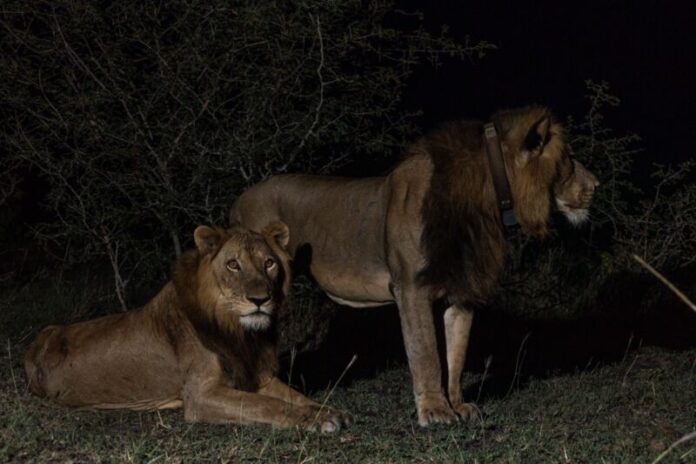
Enlarge / The intrepid three-legged lion Jacob and his brother Tibu prepare for a hunt. (credit: Alexander Braczkowski)
On February 4, scientists monitoring lion populations in Uganda captured nighttime thermal drone footage of two lions—brothers dubbed Jacob and Tibu by the Uganda Wildlife Authority—swimming across the predator-infested Kazinga Channel connecting two lakes, most likely to find mates. While there have been prior reports of lions swimming short distances, Jacob and Tibu covered about 1.5 kilometers (nearly one mile)—the longest swim yet recorded, according to a new paper published in the journal Ecology and Evolution.
"The fact that [Jacob] and his brother Tibu have managed to survive as long as they have in a national park that has experienced significant human pressures and high poaching rates is a feat in itself—our science has shown this population has nearly halved in just five years," said co-author Alexander Braczkowski of Griffith University, who has been working with the government of Uganda since 2017 to monitor the lion population in the area. "His swim, across a channel filled with high densities of hippos and crocodiles, is a record-breaker and is a truly amazing show of resilience in the face of such risk.”
Jacob and Tibu's impressive feat is likely the result of increased pressure from human encroachment, according to Braczkowski. He co-authored a 2020 paper proposing a novel census technique that could be used more broadly as an early warning of lion declines. Their method revealed a worrying movement parameter for both male and female lions in Uganda's Queen Elizabeth National Park, where the home range increased to 3.27 km (a 400 percent increase) for males and 2.22 km (a 100 percent increase) for females—likely a response to systematic prey depletion due to poaching, for example. And the sex ratio was dangerously skewed: one male to 0.75 females, a highly unusual occurrence.
Read 6 remaining paragraphs | Comments
Ars Technica - All contentContinue reading/original-link]




